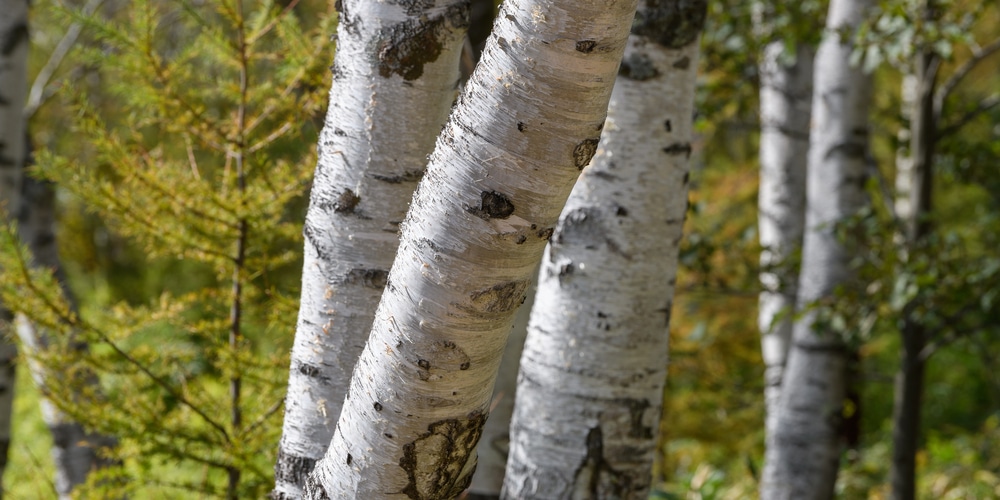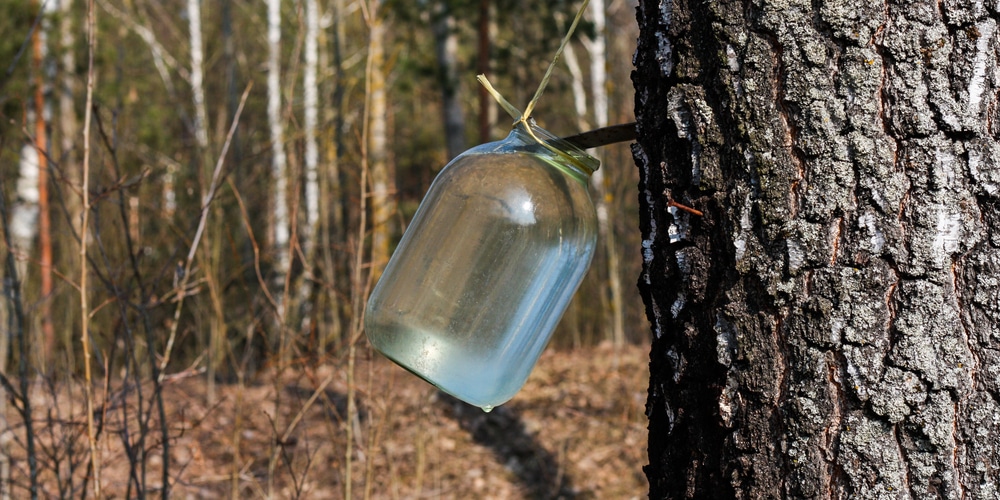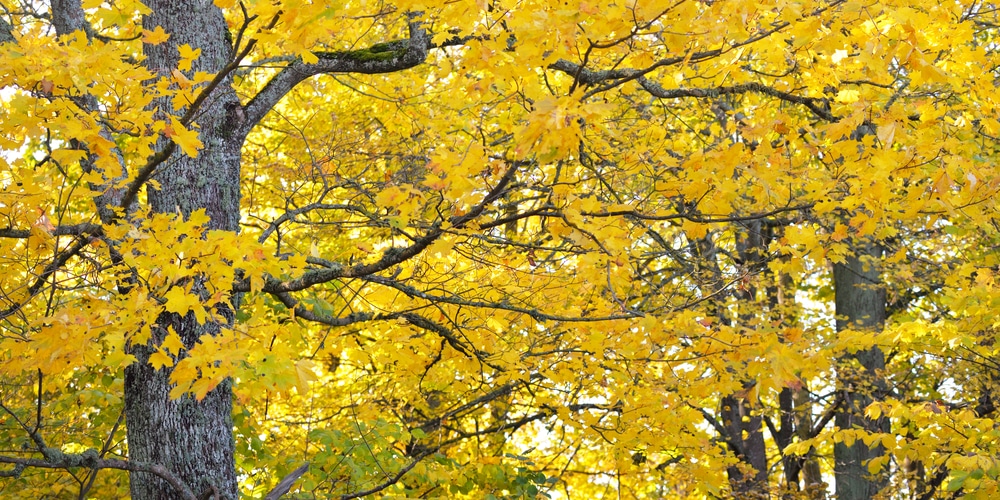Growing birch trees in California is possible as long as you’re willing to put in the work. California’s hot days and warm climate are not conducive to these trees, so constant irrigation is a must if you want a superb landscape accent.
Birch Trees in California
Here are 5 birch trees you can grow in California.
White Birch

White Birch Tree or Betula pendula is a classic birch representation, with white bark and drooping branches filled with green foliage. When fall comes around the leaves transform into a shower of gold to delight the senses.
This lush birch species are deciduous and tend to lose its leaves in fall. White Birch grows well in zones 2 to 6, which means it can thrive in both Southern and Northern California regions. The tree tends to perform better in the Northern area since it has a cooler climate.
The White Birch tree grows up to 40 feet tall and has a 30 foot spread. In hotter zones, it’s recommended that you plant it where it gets shade from the afternoon sun. Although it can tolerate a bit of drought you should always keep an eye on the soil and water as necessary.
American Dwarf Birch
You may know American Dwarf Birch by other names, including shrub birch and resin birch. It’s native to North America and is well-suited in northern California and cooler areas in the south. Dwarf Birch is one of the most manageable birch varieties available since it only grows to a maximum of four feet tall and a 3 feet spread.
Betula nana has a growing zone range from 2 through 7, which means even the southern parts of California can adopt it in their landscape. The deciduous shrub blooms in spring and sports short, glandular twigs with rounded leaves.
American Dwarf Bush can tolerate full sun in colder areas but can also survive where there’s shade. The soil should be well-draining and constantly moist. Make it a point to water and fertilize the tree well in its first year, then slowly cut back until it’s matured.
Water Birch
Water Birch, or Betula occidentalis, doesn’t grow in all of California. Its spread is somewhat limited to the southern mountainous regions. That said, planting in Northern California can lead to disappointing results.
You can grow Water Birch as a small tree or a shrub depending on your landscape preference. Constant watering is a must if you wish to have a thriving water birch in your lawn or yard. The good news is that it’s not too picky on soil type as long as it drains well and is nutrient-rich.
Water Birch can grow well under full sun as long as you provide enough irrigation. Unlike the other birch species, it has a darker bark color that ranges from black to reddish-brown.
Yellow Birch
A large-sized deciduous tree, Yellow Birch can easily grow to a height of 75 feet in the right conditions. It has been called other names, including swamp birch and golden birch, among others.
Betula alleghaniensis’ common name comes from the golden yellow bark color. Parts peel away easily at the slightest touch and scratching the twigs gives off a wintergreen oil scent.
The birch tree’s leaves are dark green at the top of the canopy and lighter below, and they change to bright yellow when the fall season arrives.
Yellow birch loves rich and moist soil, which means it can thrive near sources of water in your landscape.
Silver Birch
Silver Birch trees are deciduous trees that are medium-sized and exhibit a shiny white peeling bark. They’re native to East Asia and Europe and grow readily. In some parts of Canada and the US, the birch tree species are considered invasive.
The tree often reaches a maximum height of 80 feet tall as it matures. The bark starts golden at first but later turns a shiny white as it ages. The leaves are short and serrated and grow on thin stems. Come fall season the pale green foliage turns into a bright and welcoming yellow before falling in preparation for winter.
Silver Birch grows well in zones 2 to 7 and tends to have a shorter life in zones 8 and 9. You’ll need a well-draining spot that gets plenty of sun to accommodate this birch tree species.
Related Article: Grey Birch Tree Care


